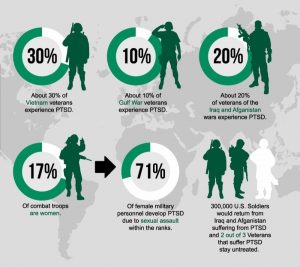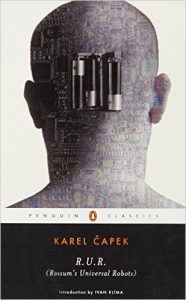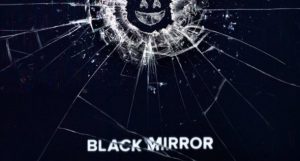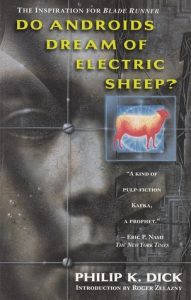Tyra Wilson
Mykia Bessicks
Lexxiana Zollicoffer
Molly Myers
Intro & Purpose
Pollution issues are some of the most important environmental, social, and health issues in the world. The rapid growth of world population has been closely accompanied by the rapid increase in all forms of pollution, especially air and water pollution.
Our product, Age of Environment, explores three of the most polluted and destroyed environments in the world before and after they were ruined by human interactions. The three that we are focusing on are the Citarum River, Linfen, China, and Rondonia, Brazil. People need to be aware of our product because it will show how difficult it is to fix what has been destroyed and hopefully as a result, learn steps for the future that could avoid this from worsening or happening again.
Water pollution is the inclusion or inserted living things, elements, energy, and/or other components into the water by human activity so that the water quality decreases to a certain level, which causes the water to not function as intended (NSW Environment & Heritage, 2017). In Indonesia, the Citarum River plays an important role in the water supply for both the city of Bandung, which is home to 10 million people, and the greater Jakarta region, of 25 million people (Asian Development Bank, 2014). Its waters irrigate farms providing around 5% of the nation’s rice and feed more than 2,000 factories on its banks. Idyllic here in its upper reaches, downstream the story is very different (Asian Development Bank, 2014).
The Citarum River contains domestic and industrial waste. Industrial waste includes up to 80% of wastes from the national textile industries. Over the past 20 years, water quality in the Citarum River Basin has been decreasing rapidly as pollution takes over the river. In terms of air quality, it is the degree to which the ambient air is pollution-free, assessed by measuring a number of indicators of pollution.
The World Bank has stated that 16 out of 20 of the world’s worst polluted cities are in China while the State Environmental Protection Administration (SEPA) has branded Linfen as having the worst air quality in the country (Worst Polluted, 2007). The air quality is so bad that local clinics are seeing growing cases of bronchitis, pneumonia, and lung cancer. The children have high rates of lead poisoning. As the death rates continue to grow, it all has been linked to the pollution levels.
Lastly, Rondonia Brazil is one of the most deforested regions of the Amazon Rain Forest. Thousands of acres of forest have been slashed and burned there, mostly to make room for cattle ranching. Land development in the Amazon has gone through phases of rubber extraction, agricultural development, immigration, road expansion, and promotion of large enterprises in cattle ranching, timber extraction and mining (Watts, 2015).
Air pollution, for instance, leads to problems with lungs and respiratory diseases, and long-term exposure to air pollution can even lead to cancer (Worst Polluted, 2007). On the other hand, water pollution leads to different waterborne diseases such as diarrhea and can also lead to poisoning (NSW Environment & Heritage, 2007). The environmental damage caused by pollution can reach catastrophic proportions and destroy entire ecosystems leading to death of many species and a big biodiversity loss (Watts, 2015). Pollution issues are important because Earth is still our only home, and pollution is making this planet dirty and unhealthy to live in. Pollution creates many diseases and causes death of many people all across the globe.
Learning Outcomes
The goal of our product, Age of Environment, is to inform users on the harmful effects pollution has had on the planet by allowing them to view three of the world’s most polluted areas, explaining how it came to be, and how it can be fixed. Through this application, the user will not only learn about the dangers pollution has on the planet, humans, and animals but they will also learn how to become green and take initiative as an individual to ensure that no more areas on the world because as polluted as these areas are.
The users will learn about the deforestation in Rondonia, Brazil, the poor air quality in Linfen, China, and the extensive pollution in the Citarum River. The user will be able to interact with the animals in the Brazilian rainforest and learn facts about the animals like diet, lifespan, and how their population has changed since the pollution began. This will also factor into teaching the user to empathize with the animals because they will have first-hand experience interacting with them. The users will also observe the chemicals being emitted into the air from factories in Linfen, China. They will learn the harmful effects smog has on the denizens of Linfen and gain knowledge of what chemicals in the smog, specifically, are harming the environment and the citizens. The user will be able to physically pull apart the molecules of the smog and learn which of them is harmful. They will also sail on the Citarum and experience the harmful effects that amount of pollution has had on the aquatic life living in the river. They will also learn about the population of the aquatic life and how that has changed since the pollution began. Additionally, they will see through a time lapse how long it took to pollute these areas and learn how long it would take to completely restore these areas.
At the end of the simulation, we will test the user’s retention of the information they learned by quizzing them. They will be asked to identify certain species of animals and vegetation and how the pollution in the area has affected their population. They will be asked to identify which chemicals have been emitted into the air that are harmful to the environment and people. They will also be asked about how long it would take to restore each area after the devastating amount of pollution and what are some ways that they, as an individual, can protect the environment.
Rather than learning from a textbook, students will be able to physically interact with and see the things they have been learning about. This will not only help them to retain the information but it will also give the information value, which is important when trying to impact someone’s lifestyle as this virtually reality experience plans to do. “The immersion in made-to-measure environments allows students to face learning experiences that maximize the use of all their senses. This may seem insignificant but such experience becomes indispensable in the understanding of concepts unknown to the individual in question” (Huang, Rauch, & Liaw, 2010). Our targeted demographic is likely to have never physically seen the places that we are focusing on, which will make it hard for them to connect with and understand the information; however, putting them in these places gives them a reason to care, to understand.
Additionally, Age of Environment gives the user complete control of their environment by allowing them to use the time lapse function to see how the environment changes in each time period, giving them the ability to reach directly into a chemical molecular construction, and giving them complete control in making the environment new. Having the user in control will increase the amount of attention they put into the app and consequently the amount they learn. Our app will also aim to give the user clear goals during the game and help them understand how to navigate early in the game to better their learning outcomes. A study conducted by the University of Washington found that “students who had difficulty navigating in the virtual world or who lacked a clear understanding of the tasks they were to perform in it learned less and enjoyed the experience less” (Winn, 1995). This is why the user will get clear instructions on their goals and how to navigate in the beginning of the simulation.
User Experience
There are many other applications that have similarities to Age of Environment. There is a simulation on the NY Times VR application called Underneath a Cracked Sky that allows the viewer to follow divers underneath the frozen Pacific and watch as they explore the sea below. They have also worked with scientists to create a virtual reality experience that shows users how climate change has affected the ocean first hand. This is very similar to the way that AOE will implement environmental exploration (from the perspective of the viewer as if they are present in this environment). This is different because it is merely exploration of a destroyed environment. Age of Environment will aim to allow users to explore environments in two different ways; the real and true polluted state, and a simulated state that the environment was in before it was polluted. The user will see how an environment went from perfectly clean and natural, to completely ravaged by pollution in a time lapse. This will have a huge emotional effect on a user as they can see the severity of the before and after. The VHIL (Virtual Human Interaction Lab) ran by Stanford Professor Jeremy Bailenson has also developed a virtual reality experience that allows users to witness the effects of climate change first hand. This program allows users to explore the Great Barrier Reef and demonstrates what it looks like due to coral bleaching through pollution. In the VR you become a piece of coral and go through the process of being bleached and destroyed due to pollution. This is another VR that is very similar to the idea of AOE. Age of Environment will use these same strategies to evoke empathy and an understanding of how pollution has come to be in the user, but will also allow the user to take part in fixing the problem. For example, when visiting the Citarum River in the virtual reality program users will have a chance at moving around the river with a resident of the city attempting to clean-up the water.
The experience itself will be an immersive time lapse that the user will use to learn about the devastation of pollution. It will start out as a 360 view of one of the selected environments before it was ravaged by pollution. For example, the user will be standing alongside the Citarum River before it was filled with trash and chemicals. The images needed can be captured with the GoPro Omni, which will show the actual destination and will be digitally altered to remove pollution. A time lapse will occur around the user in the area as the environment is more and more polluted. Trash in the river will build up around the user as a voiceover describes how this happened. The user can look around and move. After the time lapse is over the user will then be instructed by a voiceover about how people have attempted to clean-up the mess. The user can then use the Oculus or HTC Vive handheld joysticks to reach into the trash and attempt to help clean up the environment.
Implementation Strategy
The virtual reality environment will be created using a combination of photographs taken of the areas targeted as subjects, and a projected environment. The VR includes user experiences in a few places around the world such as Indonesia, China, and Brazil. The images of these places can be captured by exploring them and recording with the GoPro Omni 360 camera. The virtual reality environment will ideally be viewable through the semi-immersive Oculus Rift, which is $400.00, or the HTC Vive, which is about $600.00 without a PC (Swider, 2017). With these systems, a user will be able to interact with the environment around them, which is the ultimate goal of the VR program Age of Environment. The program is meant to not only educate students by teaching them how pollution and human interaction has destroyed the selected environments, but also gives them a way to learn how to help fix what has been destroyed. The Vive and Oculus Rift will allow students to virtually touch and interact with the environment they are seeing. The Oculus and Vive are expensive systems that not every education system will have access too. As an option, the VR program can be available as a downloadable smartphone application, much like the experiences that the NY Times VR app offers. Age of Environment can be implemented similarly and viewed with or without a Google Cardboard as a non-immersive virtual experience as well, just as the NY Times VR app allows. This is a much more cost effective alternative than making the program only usable on platforms like the expensive Vive and Oculus that not every student will have access to.
The program is meant to target students in secondary or higher education studying subjects like environmental science. The ideal way to reach the targeted users of this program is to make this system available in school classrooms. Having an application similar to the NY Times app will make it easy for schools to show students the program in the classrooms, with or without a google cardboard to use. Private schools, public schools with a high budget, or universities may be able to afford to have a Vive or Oculus present to utilize a more interactive, complex experience. The ultimate goal will be to have Age of Environment viewable to students in high school or college science classes before they venture into independent adulthood and start leaving a serious carbon footprint.
Long-term Vision
Within our prototype, there will be a few limitations in order to keep it simple and manageable. We will start with only three locations that face high levels of pollution such as the Citarum River, Linfen, China, and Rondonia, Brazil. This will allow us to focus on the details of these specific areas in order to make the VR more realistic, interactive, and educational for the user.
Stressing the importance of virtual reality applications in the education system is also important. Since our VR application will be placed into classroom settings, we want it to be known as something that helps shape the learning of students and others. Using VR in the classroom contributes to the “understanding of abstract concepts, as well as in training in real environments and situations” (Fernandez, 2017). Since the idea behind our application is to create an environment that has been destroyed by pollution, it will allow there to be a training aspect for students in order to teach them and give them real experience in facing these major issues.
The next phase of development will include more locations to explore and a higher quality of content. Some locations that can be added to our application are Chernobyl in the Ukraine, La Oroya in Peru, and Norilsk in Russia. All of these areas face mass devastation related to and caused by pollution. Within these countries about 10 million people are at risk for cancer, respiratory disease, and even premature death due to high levels of pollution (West, 2017). To improve user experience with a higher quality of content, we can find a better quality 360 degree image or even find new ways to make the VR interactive. We can provide background information on how the area became polluted and we can also add more information to teach people about the everyday lifestyle that someone from these specific areas would have.
Our five year plan includes adding more locations to our application other than the ones mentioned above, more interaction, and a focus on educating people on the importance of cleaning up the Earth and the environment that we live in. It may be important to add locations from here in the United States in order to educate people on the fact that pollution isn’t just a problem in foreign countries and that we face high levels of pollution too. We want the interaction to be as realistic as possible. Over time, it would be interesting if the user could pick up trash to help with cleanup efforts or interact with other people in the area. The education could then be improved by using a voice over to teach prevention methods. Water pollution tends to start on land and makes its way to open waterways and soil pollution is caused by big industries and agriculture (Kinhal, n.d.). If we teach simples things like soil conservation and recycling, then that’s one step closer to helping the Earth be a healthy place, which will then allow our product to be more functional.
Works Cited
Bank, Asian Development. “Tackling Pollution in Indonesia’s Citarum River Basin.” Asian Development Bank, Asian Development Bank, 5 June 2017, www.adb.org/news/photo-essays/tackling-pollution-indonesias-citarum-river-basin.
Fernandez, Manuel. “Augmented Virtual Reality: How to Improve Education Systems.” Higher Learning Research Communications, vol. 7, no. 1, 01 June 2017, pp. 1-15. EBSCOhost, ezproxy.stevenson.edu/login?url=http://search.ebscohost.com/login.aspx?direct=true&db=eric&AN=EJ1150087&site=ehostlive.
Heritage, corporateName=Office of Environment and. “Water quality.” NSW Environment & Heritage, 12 May 2017, www.environment.nsw.gov.au/water/waterqual.htm.
Huang, Hsiu-Mei, et.al. “Investigating Learners’ Attitudes toward Virtual Reality Learning Environments: Based on a Constructivist Approach.” Computers & Education, vol. 55, no. 3, 01 Nov. 2010, pp. 1171-1182. EBSCOhost, ezproxy.stevenson.edu/login?url=http://search.ebscohost.com/login.aspx?direct=true&db=eric&AN=EJ892516&site=ehost-live.
Kinhal, Vijayalaxmi. “Ways to Stop Pollution.” LoveToKnow, LoveToKnow Corp, greenliving.lovetoknow.com/ways-stop-pollution.
“Linfen, China.” :: WorstPolluted.Org : Projects Reports, 2007, www.worstpolluted.org/projects_reports/display/22.
Swider, Matt. “HTC Vive vs Oculus Rift: which VR headset is better?” TechRadar, TechRadar The source for Tech Buying Advice, 12 Oct. 2017, www.techradar.com/news/wearables/htc-vive-vs-oculus-rift-1301375/2.
Watts, Jonathan. “Amazon deforestation report is major setback for Brazil ahead of climate talks.” The Guardian, Guardian News and Media, 27 Nov. 2015, www.theguardian.com/world/2015/nov/27/amazon-deforestation-report-brazil-paris-climate-talks.
West, Larry. “The 10 Worst Polluted Places on Earth.” ThoughtCo, 24 July 2017, www.thoughtco.com/worst-polluted-places-on-earth-1204101.
Winn, William. “THE VIRTUAL REALITY ROVING VEHICLE PROJECT .” T.H.E. Journal, vol. 23, no. 5, 1 Dec. 1995. ERIC, web.b.ebscohost.com/ehost/detail/detail?vid=11&sid=2b5e4549-1c6a-436d-a01f-f81e7167fb50%40sessionmgr120&bdata=JnNpdGU9ZWhvc3QtbGl2ZQ%3d%3d#AN=EJ516505&db=eric.
Storyboard Link:
Presentation Link:
https://prezi.com/p/lshs_tje3lym/
Demo Link (Downloadable link):




